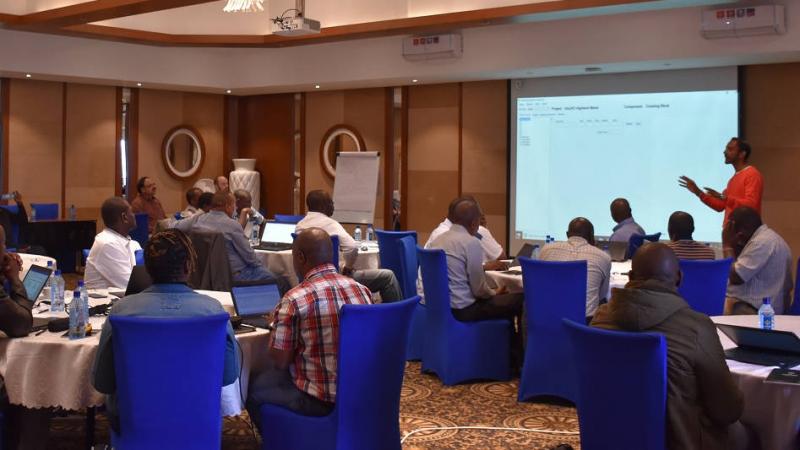By Jerome Bossuet
From 10-12 September, members of the Global Maize Program at the International Maize and Wheat Improvement Center (CIMMYT) team met with breeders, seed system specialists, research associates, technicians and enabling technology leads from Kenya and Zimbabwe for a costing workshop.

EiB's Biswanath Das presenting the costing tool
Participants began by dissecting the different costs of each service unit – from nurseries and phenotyping support to on-station, on-farm trials and seed systems activities – before brainstorming how to define the costs per product profile based on the breeding scheme designed and implemented to deliver the target number of products. Yoseph Beyene, for instance, defined all the activities along with the number of service units involved to deliver the defined number of allocated products for the product profile (intermediate maturity, mid-altitude in wet and dry conditions). The breeding teams of the six product profiles for eastern and southern Africa subsequently defined the unit costs and associated them with specific activities. Costing exercises were reviewed on the final day.
Biswanath Das, NARS support coordinator for EiB, presented EiB efforts to drive the costing of breeding programs in CGIAR and NARS. He demonstrated use of the breeding costing software developed by the University of Queensland that helps breeders highlight what drives costs. Running the tool with KALRO highland maize product costs as an example, Das showed that the top cost of trials was guarding. Breeders can quickly validate the best options to implement their breeding objectives in a cost-effective way. For instance, they can assess what savings can be made by reducing the length or number of rows without affecting the efficiency of their selections.
Going forward, the GMP team will work to define how to distribute and incorporate management and the fixed costs of research stations across the development of different products. Breeders will also be able to adjust any cost variation in real-time, e.g. labor or utilities costs or the use of a new phenotyping tool that improves data collection. This operational costing work will ultimately increase transparency and clarity in utilization of donor funds and prioritize the fund allocation based on the importance of specific product profiles. This will also pave the way for continuous improvement of the breeding programme.
Similar costing workshops will be conducted for Latin America and Asia, in October and November respectively, to bring in greater efficiencies and higher cost-effective impact globally.